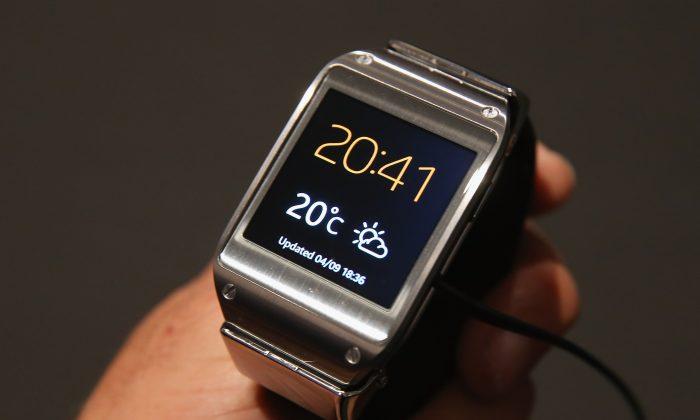This year, Samsung Inc. seems to be a step ahead of Apple. Already number one in the world when it comes to smartphone sales, the company announced its new smartwatch Galaxy Gear Sept. 4, ahead of Apple’s product.
The company held a special event at the consumer fair IFA in Berlin, Germany to unveil a product that should generate growth in an ever more competitive device market.
The main use for the watch, which cost $299 and will be on sale in the United States from October, is as an accessory to your Samsung smartphone. As of this moment, only the freshly released Galaxy Note III can control the watch, but software updates for previous versions of the Galaxy Note and the Galaxy S series are forthcoming.
Once paired via low-energy Bluetooth 4.0, phone and watch give the user an array of handy gimmicks to choose from.
“Yes, it’s a smartphone accessory that can pick up notifications, control music playback, and keep time with a rich variety of watch faces, but Samsung takes it a few steps further by integrating a 1.9-megapixel camera, a speaker, and two microphones—allowing you to shoot short 720p movies and even conduct phone calls with the Galaxy Gear,” writes Vlad Savov of the Verge, on site in Berlin.
Although the watch is not able to handle calls by itself, the user can either pick up phone calls by using its touch screen display or access contacts stored in the phone.
Mr. Savov cautions though that the speaker is very quiet and making calls using the watch will be difficult to impossible in noisier locations. Music on the phone can also be controlled via the watch, but the watch can’t play music itself.
The super AMOLED display is 1.63 inch wide and has a 320x320 resolution, enough to view pictures or videos. Sticking to the theme of keeping your phone in your pocket, the watch also takes pictures and videos with its 1.9 megapixel camera. These photos are either stored on the four gigabyte internal memory or synced with the phone.
According to Mr. Savov, there are around 70 apps for the Gear, which he describes at a “feature-rich” device. Facebook, Twitter and Evernote are some of the more popular third-party apps that the Gear features. The apps are installed via an application on the controlling phone. Other handy programs include the possibility to find your phone or dictate replies to text-messages.
In-built apps include a pedometer which measures the user’s steps and also syncs with the Samsung health suite on the phone.
“With all of its extra integrated tech, the Galaxy Gear is a fair bit bulkier than the Pebble [a competitor watch], though Samsung’s correct in saying its watch is lighter than it appears,” writes Mr. Savov. The first model comes in six different colors: Black, gray, orange, beige, gold and green.
He also believes that the usage time of the 315 milliampere battery could be an issue, despite the advocated run-time of 25 hours.
“Samsung promises ‘about a day’ of endurance from the Gear, but by the end of our briefing with the company, the cameras on most of its demo units were refusing to turn on due to the watches running low on power.”
Another issue could be the price, which according to Mr. Savov is too high. “If you think of it as a toy and a fun accessory, it can definitely be enjoyed, however, Samsung just isn’t pricing it like such a device,” he notes saying it is too dependent on the already expensive phone to get all the benefits.
Samsung Launches Smartwatch Galaxy Gear
Device needs smartphone for most features, costs $299
This year, Samsung Inc. seems to be a step ahead of Apple. Already number one in the world when it comes to smartphone sales, the company announced its new smartwatch Galaxy Gear Sept. 4, ahead of Apple’s product.


9/4/2013
Updated: 9/4/2013




Friends Read Free